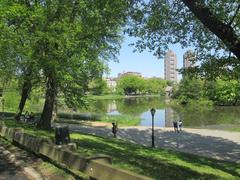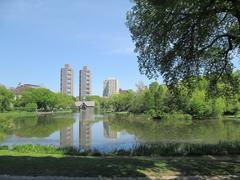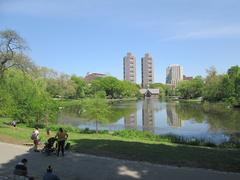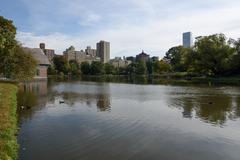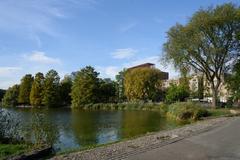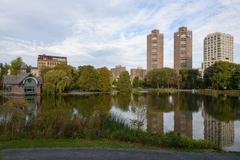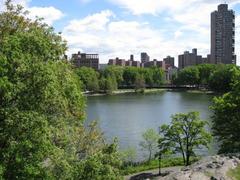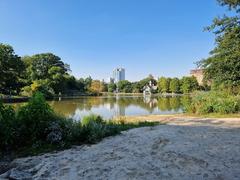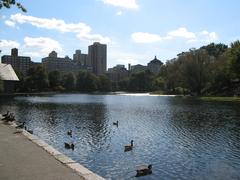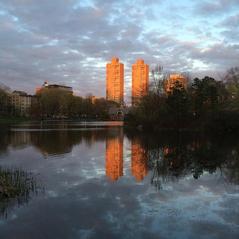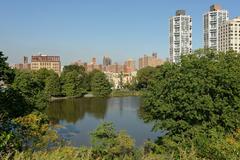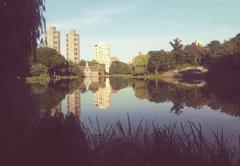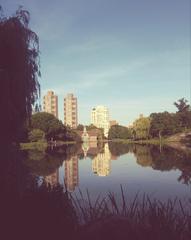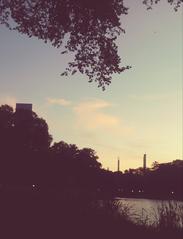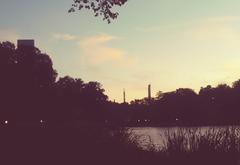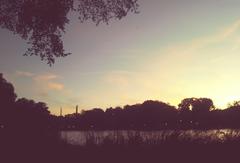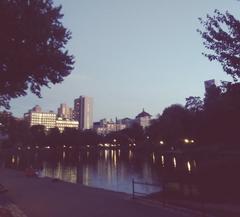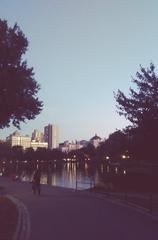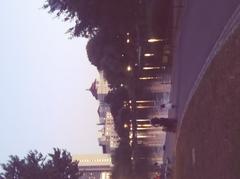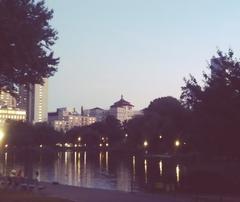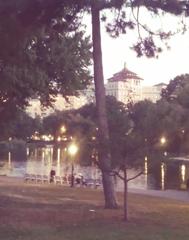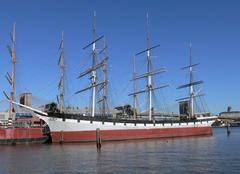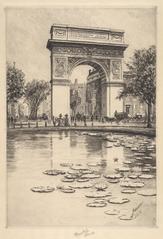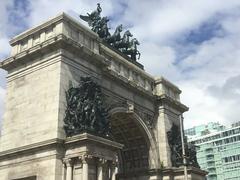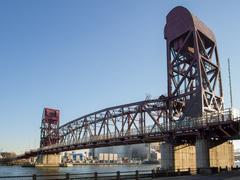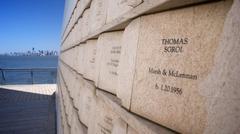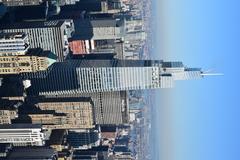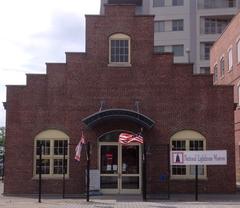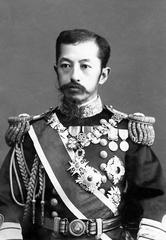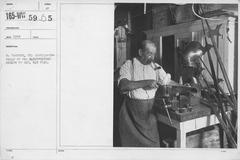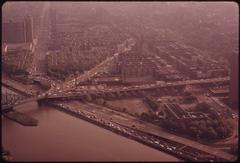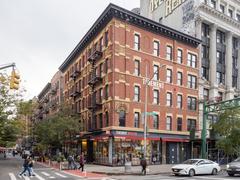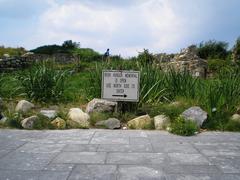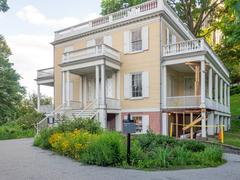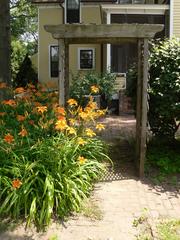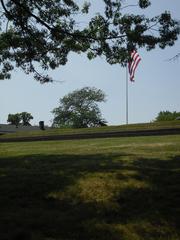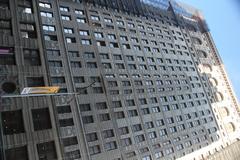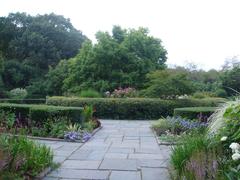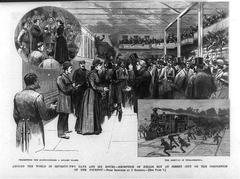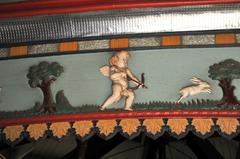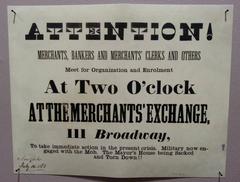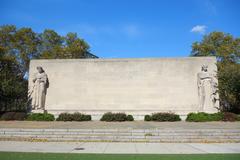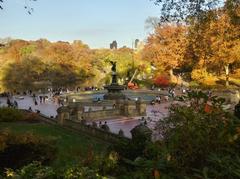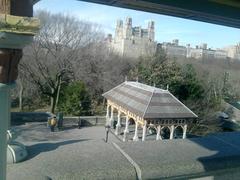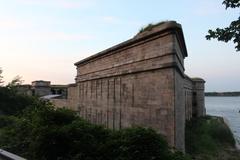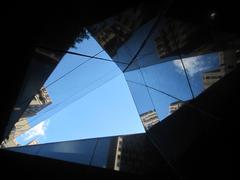
Guide to Visiting Malcolm X Boulevard New York City
Date: 31/07/2024
Introduction
Malcolm X Boulevard, formerly known as Lenox Avenue, is a street rich in African American history and culture, nestled in the heart of Harlem, New York City. This iconic boulevard has been a witness to some of the most significant cultural movements and historic events, cementing its place as a central artery in the life of the community. From its origins in the late 19th century to its renaming in honor of the influential civil rights leader Malcolm X in 1987, the boulevard has continually evolved, reflecting the dynamic spirit of Harlem. The Harlem Renaissance of the 1930s saw Malcolm X Boulevard become the epicenter of a cultural explosion, bringing together diverse communities through jazz, art, and literature (NYC Planning). Today, it remains a vibrant symbol of African American heritage, featuring historic landmarks like the Apollo Theater and cultural institutions such as the Schomburg Center for Research in Black Culture (Lonely Planet). This comprehensive guide will delve into the boulevard’s storied past, its cultural significance, and provide essential visitor information to help you make the most of your visit.
Table of Contents
- Introduction
- History of Malcolm X Boulevard
- Historic Landmarks
- Cultural Significance
- Modern-Day Harlem
- Visitor Information
- Unique Activities
- FAQ
- Conclusion
Exploring Malcolm X Boulevard: History, Culture, and Visitor Information
History of Malcolm X Boulevard
Origins and Renaming
Originally part of Sixth Avenue, the segment north of Central Park was renamed Lenox Avenue in late 1887 in honor of philanthropist James Lenox. James Lenox was a notable figure in New York City, known for his contributions to the city’s cultural and educational institutions. The avenue was later co-named Malcolm X Boulevard in 1987 to honor the influential civil rights leader Malcolm X, also known as El-Hajj Malik El-Shabazz.
The Harlem Renaissance
Malcolm X Boulevard was the epicenter of the Harlem Renaissance during the 1930s. This cultural movement saw a flourishing of African American art, music, and literature. The street brought together African Americans, Latinos, British West Indians, and Spaniards who developed relationships over common interests such as jazz and food. Harlem was so firmly established as the world capital of jazz and African-American culture that “black cinema” films like Harlem Is Heaven were playing on the nation’s big screens. Jazz clubs proliferated, with as many as 15 great clubs on one block, featuring legends like Duke Ellington and James P. Johnson.
Civil Rights Era
Malcolm X Boulevard holds significant historical importance due to its association with Malcolm X. The boulevard is home to the Masjid Malcolm Shabazz, a Sunni mosque where Malcolm X preached for years. This mosque, formerly known as Muhammad’s Temple of Islam #7, was a bastion of Black Nationalism and a crucial meeting place for racial justice organizing during the Civil Rights era. Malcolm X’s presence in Harlem was profound; he organized massive revolts against New York’s police force and led significant civil rights activities in the area.
Historic Landmarks
Apollo Theater
The Apollo Theater, located just two blocks away from Malcolm X Boulevard, has been a cornerstone of Harlem’s cultural landscape since 1934. It has showcased Black voices in entertainment, including legends like Billie Holiday and Aretha Franklin, and continues to feature modern thought leaders such as Ta-Nehisi Coates (Lonely Planet).
Savoy Ballroom
The Savoy Ballroom, located between 140th and 141st Streets on Malcolm X Boulevard, was another historic venue. It was a hub for jazz and dance during the Harlem Renaissance, attracting both local residents and visitors from afar (NYC Planning).
Sylvia’s Restaurant and Lenox Lounge
Sylvia’s Restaurant, located between 126th and 127th Streets, and the Lenox Lounge, between 124th and 125th Streets, are iconic establishments on Malcolm X Boulevard. Sylvia’s is renowned for its soul food, while the Lenox Lounge has been a historic jazz club since the Harlem Renaissance (NYC Planning).
Cultural Significance
Malcolm X Boulevard is not just a street; it is a symbol of African American culture and history. The boulevard is part of the Mount Morris Park Historic District from 119th Street to 123rd Street, designated by the New York City Landmarks Preservation Commission in 1971. This designation underscores the historical and cultural importance of the area (NYC Planning).
Modern-Day Harlem
Today, Malcolm X Boulevard continues to be a vibrant part of Harlem, reflecting its rich history and cultural diversity. The street is a medley of voices from Black New Yorkers with roots across the African Diaspora, instruments playing jazz, and the sounds of street food being prepared. It captures the distinctive soul of Blackness (NYC Planning).
Visitor Information
Visiting Hours and Tickets
- Apollo Theater: Open daily from 10 AM to 6 PM. Tickets for shows vary in price and can be purchased online or at the box office.
- Savoy Ballroom: Although the original ballroom is no longer standing, the site is marked, and visitors can explore the surrounding area at any time.
- Sylvia’s Restaurant: Open from 8 AM to 10 PM daily. Reservations are recommended.
- Lenox Lounge: Currently closed for renovation; check for reopening schedules.
Travel Tips
- Best Time to Visit: Spring and fall offer the most pleasant weather for walking tours and outdoor activities.
- Getting There: Easily accessible via the 2, 3, B, and C subway lines. Street parking is limited, so public transport is recommended.
- Nearby Attractions: Central Park, Studio Museum in Harlem, and Schomburg Center for Research in Black Culture.
Accessibility
- Most historic sites and restaurants on Malcolm X Boulevard are wheelchair accessible. Check individual venues for specific accommodations.
Unique Activities
- Guided Tours: Harlem Heritage Tours offers guided walking tours of Malcolm X Boulevard, highlighting its rich history and cultural significance.
- Special Events: Look out for jazz festivals and cultural events, particularly during the Harlem Renaissance Centennial celebrations.
- Photographic Spots: The murals and street art along Malcolm X Boulevard provide excellent backdrops for memorable photographs.
FAQ
Q: What are the top attractions on Malcolm X Boulevard? A: The Apollo Theater, Sylvia’s Restaurant, and the historic site of the Savoy Ballroom are must-visit attractions.
Q: Is there an entrance fee for the Apollo Theater? A: While there is no entrance fee to visit the theater during the day, tickets for shows and events are required.
Q: Can I take a guided tour of Malcolm X Boulevard? A: Yes, Harlem Heritage Tours offers comprehensive guided tours that cover the historical and cultural highlights of the boulevard.
Conclusion
Malcolm X Boulevard stands as a testament to the rich tapestry of African American history and culture in Harlem. From its early days as Lenox Avenue to its pivotal role during the Harlem Renaissance and the Civil Rights Movement, the boulevard has been a beacon of resilience and cultural pride. Today, it continues to be a vibrant and essential part of Harlem, offering visitors a unique blend of historical landmarks, cultural institutions, and contemporary experiences. Whether you’re exploring the historic Apollo Theater, enjoying a meal at Sylvia’s Restaurant, or simply walking along the boulevard, Malcolm X Boulevard offers a profound connection to the past while embracing the future. Plan your visit today and immerse yourself in the distinctive soul and history of this iconic New York City street (NYC Planning).
